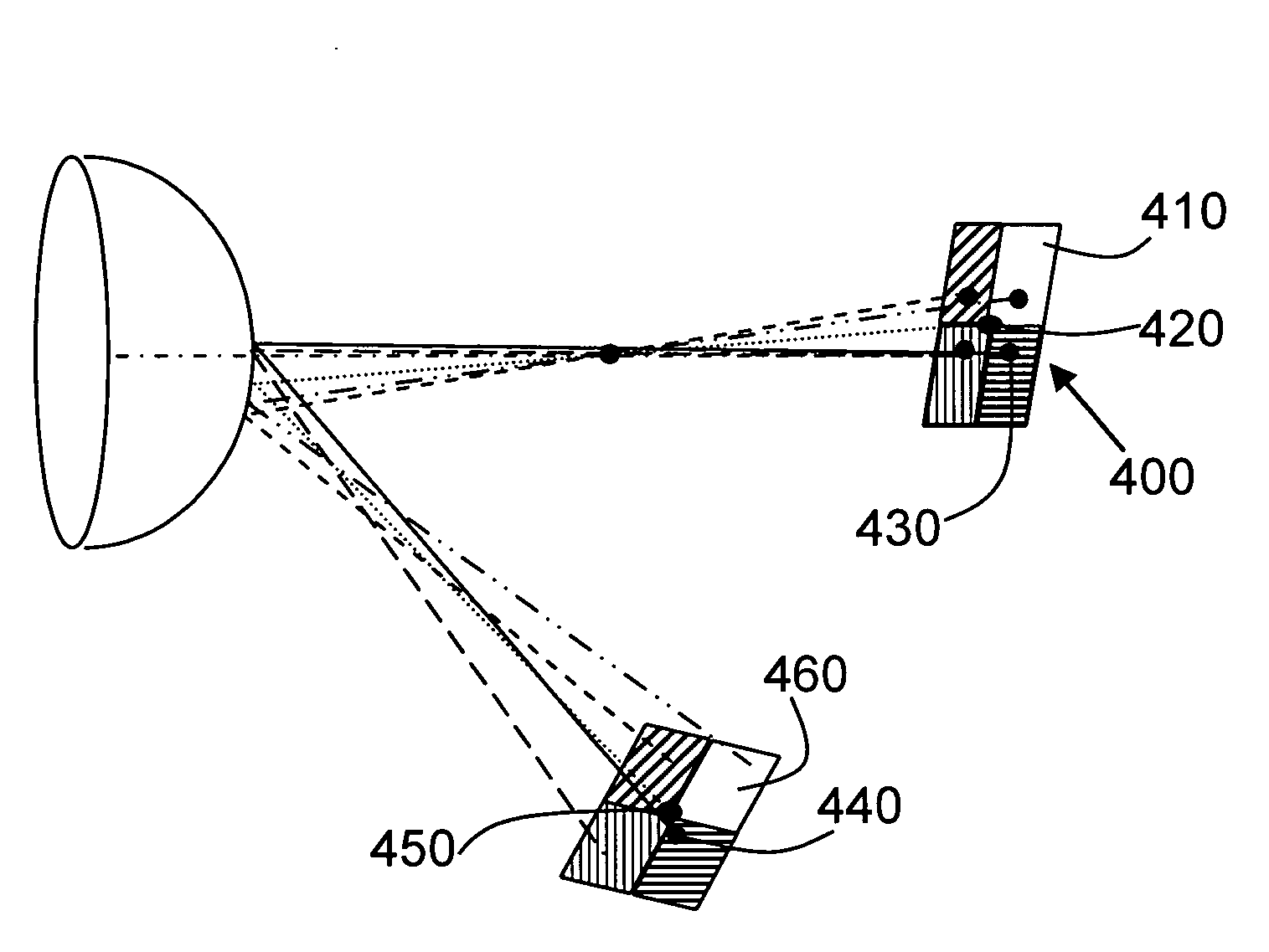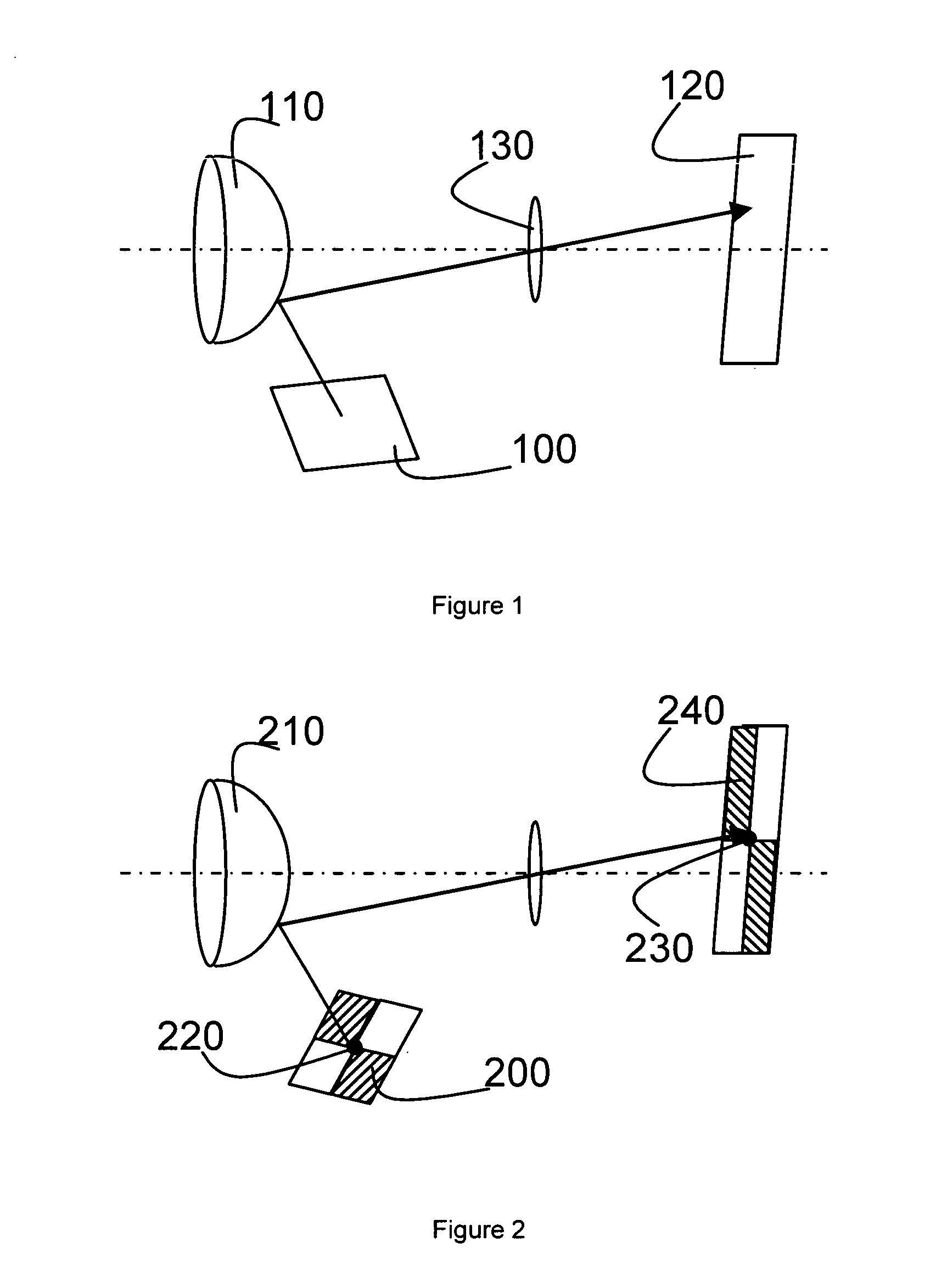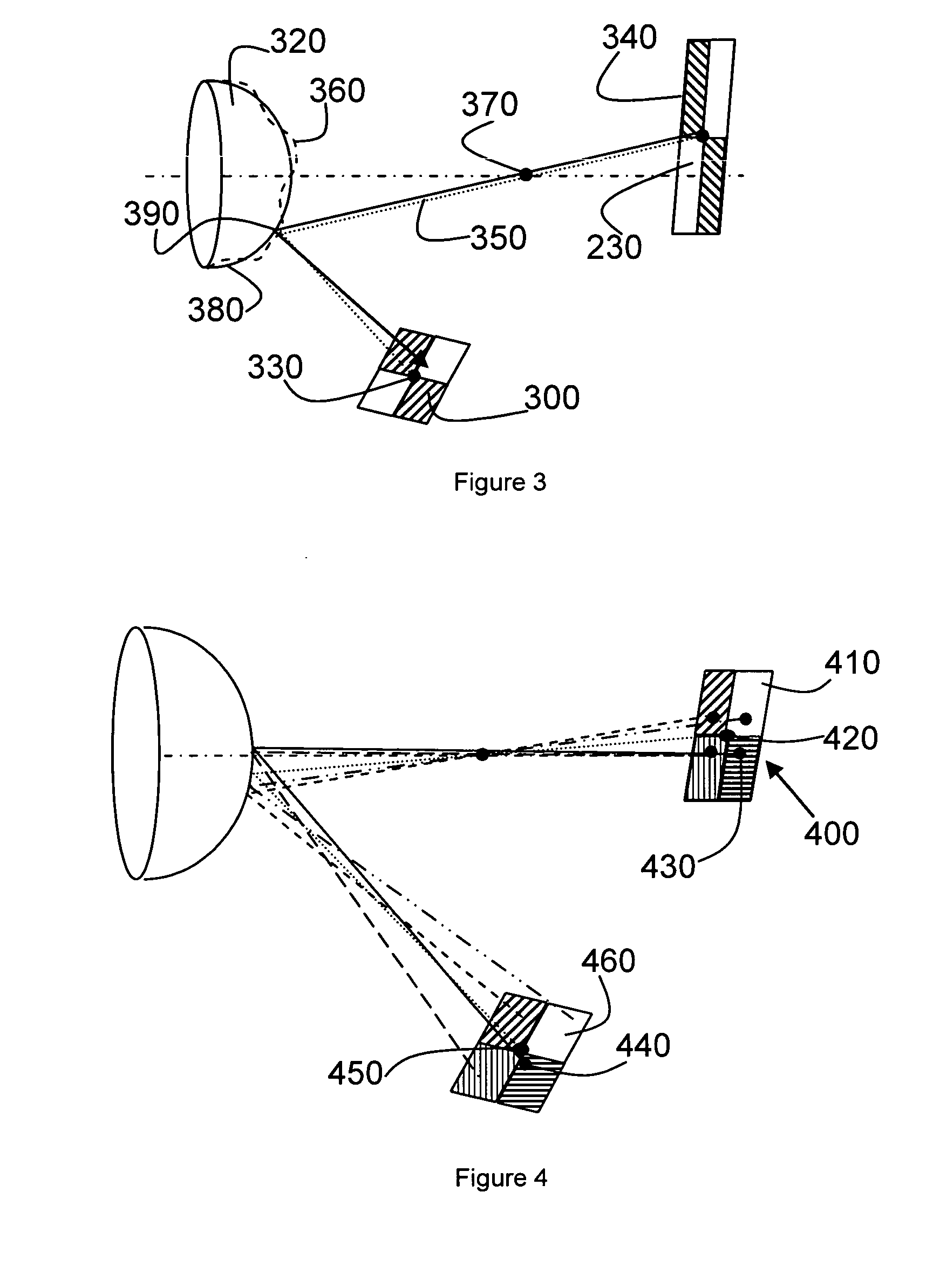Method of evaluating a reconstructed surface, corneal topographer and calibration method for a corneal topographer
a corneal topographer and reconstruction method technology, applied in the field of methods, can solve problems such as inaccuracy in reconstructing corneal surfaces, ambiguity in the relationship between stimulator source points and image points, and the procedure is not without problems
- Summary
- Abstract
- Description
- Claims
- Application Information
AI Technical Summary
Benefits of technology
Problems solved by technology
Method used
Image
Examples
Embodiment Construction
[0039]FIG. 1 schematically depicts a part of a stimulator source 100 arranged to illuminate a target surface 110 (the target can e.g. be an eye). The ray of light emanating from the stimulator source is reflected on the target surface, the reflected ray of light is received by the image target 120 which can e.g. be a CCD camera. Between the target surface and the image target, a lens 130 can be present.
[0040]In general, when the stimulator source does not comprise distinct feature points, it is not possible to establish a one-to-one relationship between a point on the stimulator source and the corresponding projection on the image. FIG. 2 schematically depicts an arrangement that enables this correspondence. FIG. 2 schematically depicts a part of the stimulator source 200 arranged to illuminate a target surface 210. The part of the stimulator source 200 as shows comprises a pattern of rectangular shapes. The different parts or shapes of the stimulator source can e.g. emit a differen...
PUM
 Login to View More
Login to View More Abstract
Description
Claims
Application Information
 Login to View More
Login to View More - R&D
- Intellectual Property
- Life Sciences
- Materials
- Tech Scout
- Unparalleled Data Quality
- Higher Quality Content
- 60% Fewer Hallucinations
Browse by: Latest US Patents, China's latest patents, Technical Efficacy Thesaurus, Application Domain, Technology Topic, Popular Technical Reports.
© 2025 PatSnap. All rights reserved.Legal|Privacy policy|Modern Slavery Act Transparency Statement|Sitemap|About US| Contact US: help@patsnap.com



